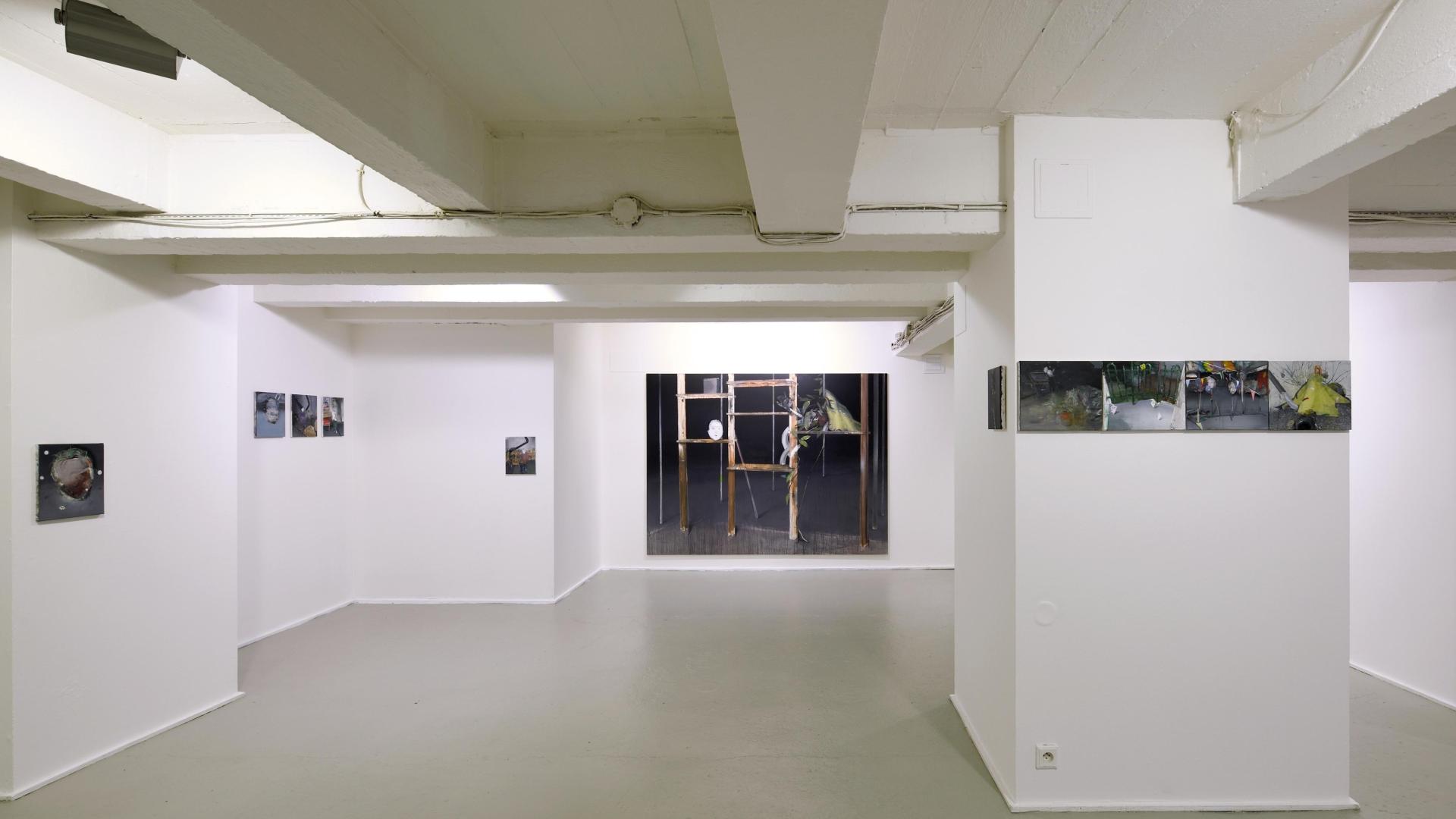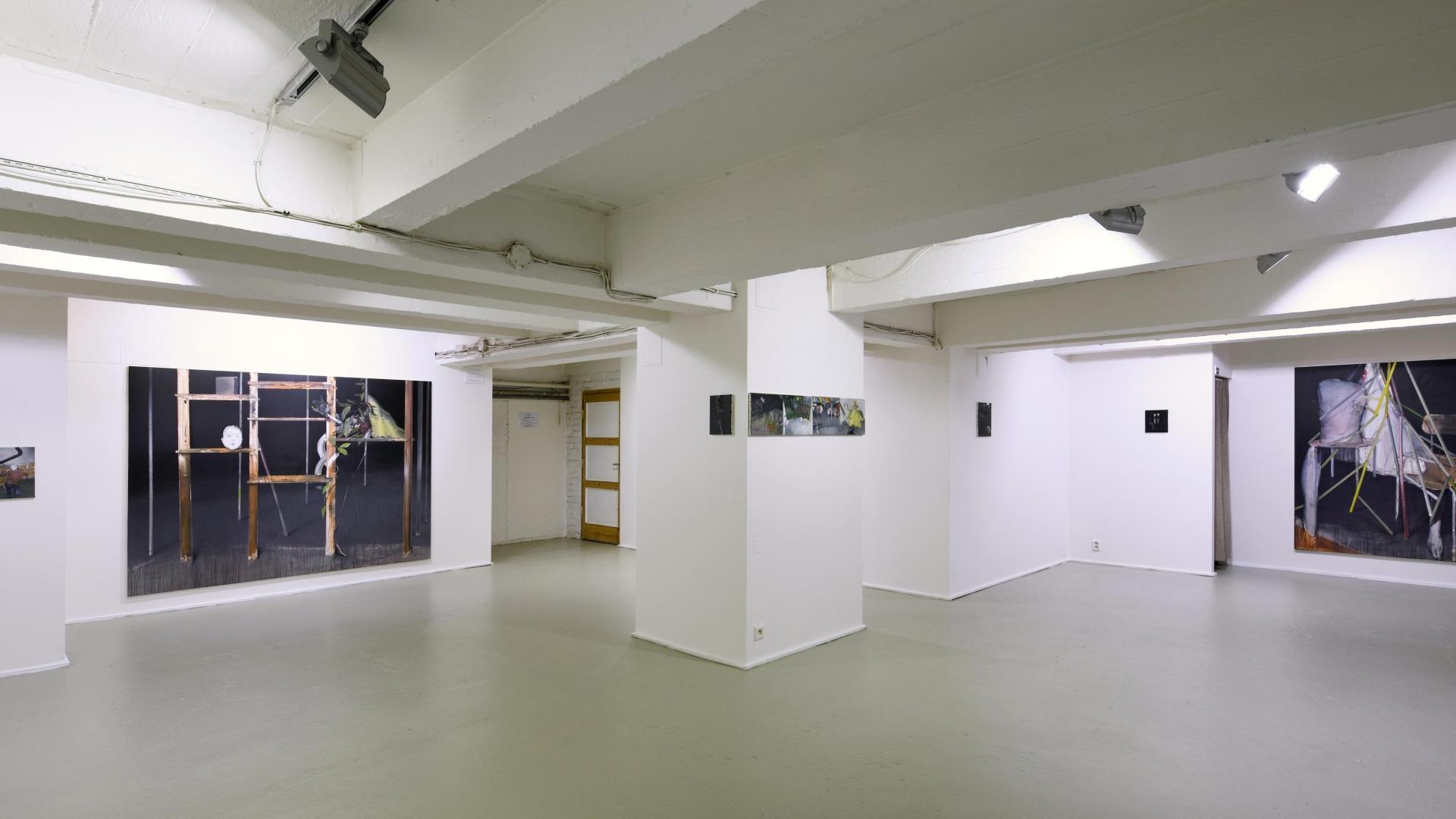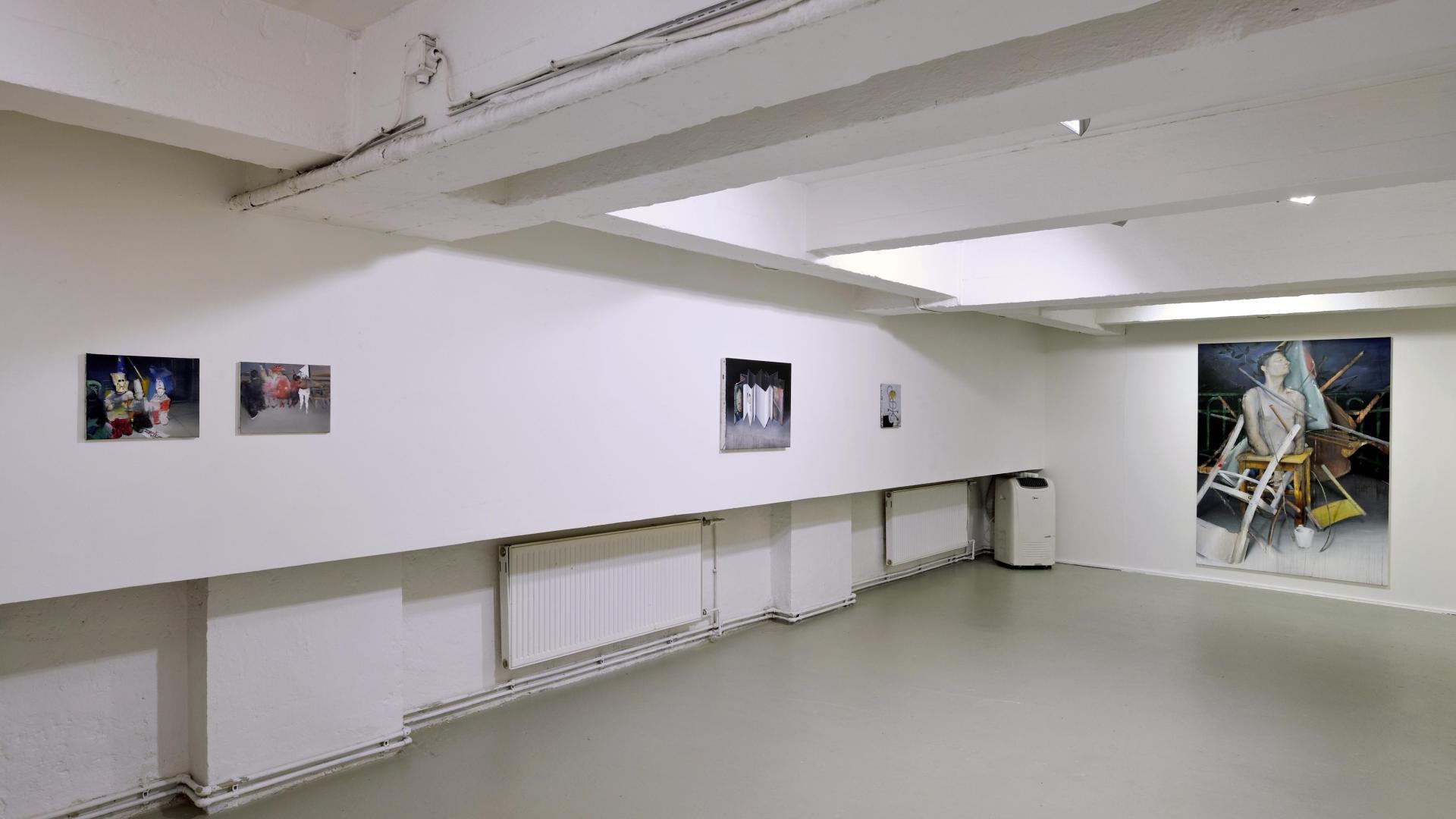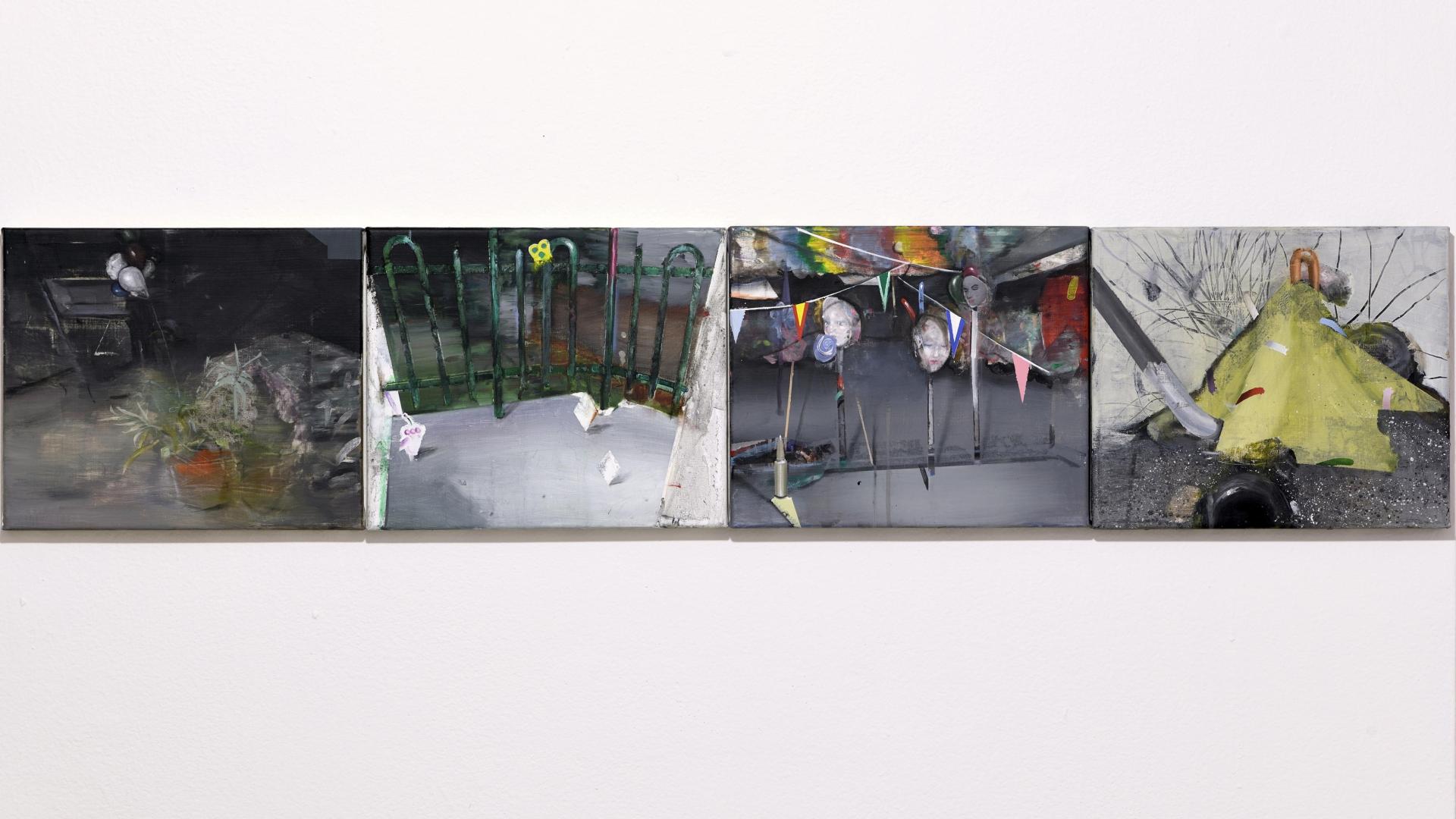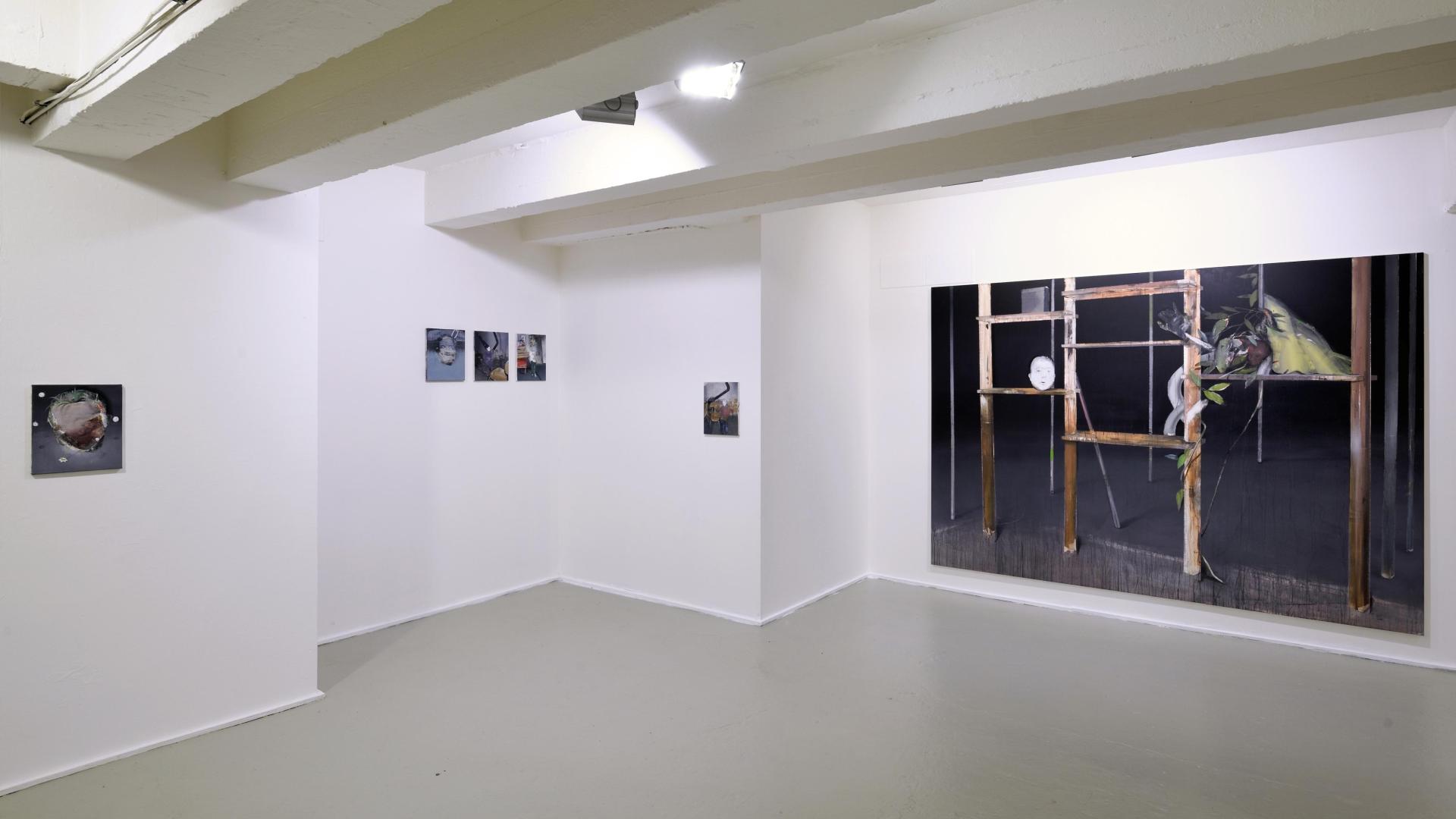
Cloakroom at the End of the Corridor
—
Galerie Dole, Ostrava, CZ
Solo exhibition
Curator: Petr Vaňous
The Ostrava exhibition Cloakroom at the End of the Corridor metaphorically refers to the changing state of the human subconscious. It presents a set of new paintings depicting mysterious recesses and hidden places which seem to have emerged from the surface of time and various layers of memory.
The compositions of Jiří Marek’s new paintings create the impression of a sombre dream-world. This is a space of replayed memories, shifted to different planes with jumbled-up contexts and rhythms, which refer to formerly specific places and states, expressing the remoteness of these pseudo-places in our subconscious through the suffocating atmosphere and distressing emotions with which the compositions are imbued. Their oppressive effect is further strengthened by the illogicalities and phantasms that form part of Marek’s artistic language (e.g. the motif of small heads).
Specific objects – shelves, chairs, school desks, pipes and tubes, earrings or a grille – are detached from reality and situated within an unreal framework, whose elasticity undermines any sense of certainty and orientation. The close proximity of recognizable reality and unreal motion (which deforms the framework depicted in the works) reveals a shift in the artist’s inner model, which is the scene of cathartic, introspective transformations linking the long-gone personal past with the burdensome tasks of the present. The quotidian banality of the daily routine recedes into the background, allowing eloquent details in the paintings to trigger further associations.
Jiří Marek’s “actional” thematization of peripheral elements, remote things, banalities, sublimated needs and de-contexts – in which he discovers and gradually reveals a new poetics of vividly intense feelings awakening the need for human decision-making – is not far from the poetics of contemporary literature. Anybody who has read Nobel Prize-winner Peter Handke’s early novel The Goalie’s Anxiety at the Penalty Kick (1970) will be aware of this similarity.
Ostravská výstava nazvaná Šatna na konci chodby metaforicky odkazuje na proměnlivý stav lidského podvědomí. Představuje soubor nových obrazů zpřítomňující tajemná zákoutí–zátiší, která jako by se vynořovala z hladiny času a různých vrstev paměti.
Kompozice nových obrazů Jiřího Marka navozují dojem potemnělého snového světa. Prostor paměťových repríz, který v posunutých rovinách, v zpřeházených kontextech a rytmech, odkazuje na kdysi konkrétní místa a stavy, zpřítomňuje odlehlost těchto pseudo-míst v podvědomí prostřednictvím dusivé atmosféry a úzkostných emocí vložených do konstrukce kompozičních skladeb. Jejich tísnivý dojem ještě stupňují nelogičnosti a fantasmata dotvářející samotný autorský jazyka malby (např. motiv drobných hlav).
Konkrétní předměty vyjmuté z reality jako jsou poličky, židle, školní nábytek, trubky, roury, náušnice nebo mříž, situuje Jiří Marek do ireálného rámce, jehož elasticita zpochybňuje jakékoliv orientační jistoty vědomí. Těsné sousedství rozpoznatelné věcnosti a ireálného pohybu, který deformuje inscenovaný rámec, promlouvá o pohybu autorova vnitřního modelu. V něm se dějí očistné introspektivní transformace propojující dávnou osobní minulost s tíživými úkoly současnosti. Všednost a banalita denního stereotypu ustupuje do pozadí, aby promluvily výmluvné detaily malby jako spínače dalších asociací.
Markova malířská „akční“ tematizace periferních námětů, odlehlostí, banalit, sublimovaných potřeb a de-kontextů, v nichž je nacházena a postupně odkrývána nová poetika živého intenzivního pocitu probouzejícího nutnost lidského rozhodování, není v analogiích vzdálená poetice aktuální literatury. Kdo četl například prvotinu letošního držitele Nobelovy ceny za literaturu Petera Handkeho Úzkost brankáře při penaltě (z r. 1970), asi ví, nač je tu odkazováno.

